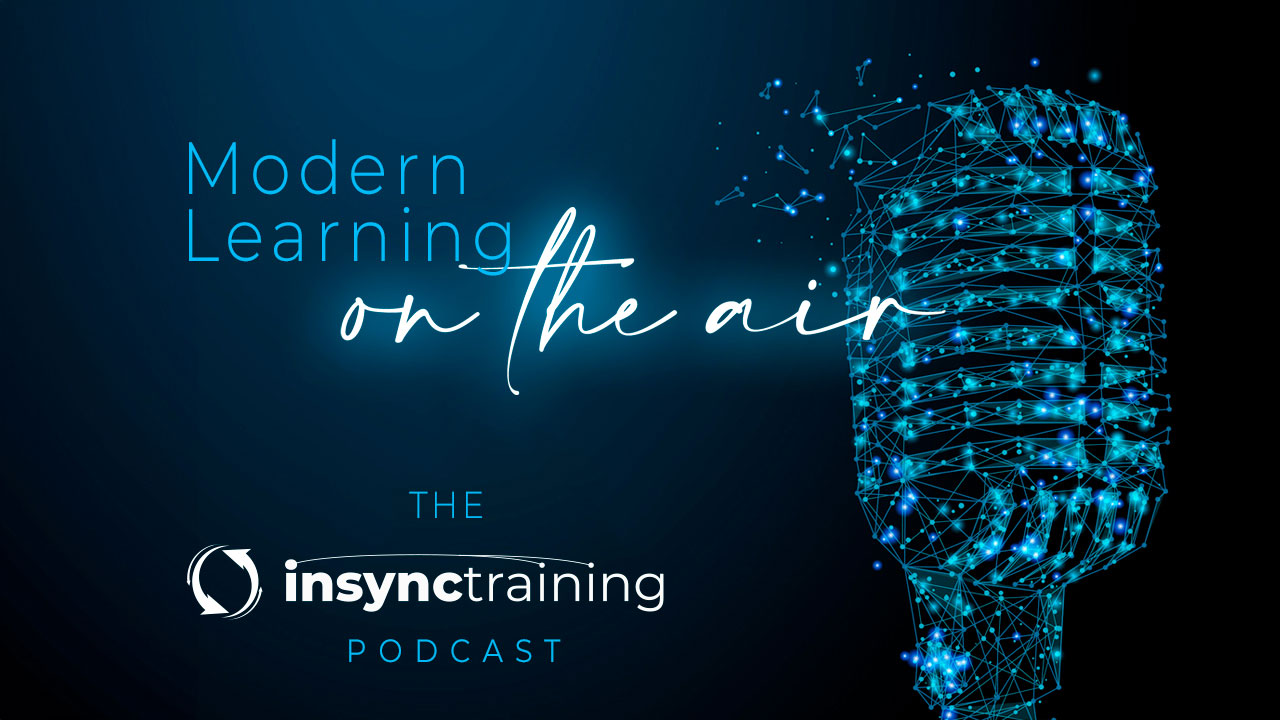4 min read
With Hybrid Work, When & Where Does Learning Happen?
 Jennifer Hofmann
:
Jun 30, 2022 12:00:00 PM
Jennifer Hofmann
:
Jun 30, 2022 12:00:00 PM


Let me ask you a question. Can you define mobile learning?
Is “mobile learning” a learning technology, a design technique, or something else completely? Not as easy a question it seems it should be, is it? I'll get back to the answer later on.
The last decade has introduced myriad new technologies and methodologies to our toolkits. But this evolution in learning has been messy. Virtualization, remote work, and the demand for hybrid learning options have resulted in being able to learn almost anywhere, almost any time, and in many, many ways.
It’s hard for even seasoned learning professionals to articulate the different aspects of hybrid workplace learning. Techniques such as gamification and technologies such as virtual classrooms often are applied inconsistently and are quickly adopted and then discarded as the latest “flavor of the day.”
If an instructional designer has a solid understanding of what learning environments are, when and where learners are consuming content, and what techniques and technologies are available, then this messy landscape can be reimagined as a truly learner-centered classroom.
Where Does Hybrid Learning Take Place?
A learning environment is formally defined as “...the diverse physical locations, contexts, and cultures in which students learn.”
Another approach is to define a learning environment as a place or location, not a technology. A single technology can be deployed in multiple locations. For example, a virtual classroom can be accessed from an individual’s desktop computer, from a mobile device, or even from within a more traditional classroom setting where a group is co-located. Because of this, a virtual classroom is not where people are learning, but a technology that supports the learning.
So, where do people learn? Here are some examples.
-
In the classroom. A classroom is a formal face-to-face environment, in a specific physical space. It generally comprises of an instructor and multiple learners. It can be supported by, among other things, printed materials, slide presentations, and various instructional technologies.
-
On a desktop computer. With the virtualization of learning, an individual’s desktop computer has become a learning environment. Content can be delivered formally using technologies such as live virtual classrooms, e-learning, and social learning (and many others). When identifying a desktop computer as a “place,” this definition assumes it is not located in a formal classroom setting—rather, individuals are learning while physically separated from one another. When learners are all accessing computers while co-located in a classroom, the definition of a computer being a “place” no longer applies.
-
On a mobile device. Mobile (or m-learning) is not a technology; it is a place. This is because many learning technologies can be implemented on a mobile device, including e-learning, virtual classrooms, or video. Therefore, a mobile classroom refers to a learning experience where the learner is working from a smart phone or a tablet. Learners could be at desks, or just about anywhere their jobs might take them. Remember, a full-featured laptop is not considered to be a mobile device. While you could, indeed, take the laptop just about anywhere, for the purposes of our discussion, a laptop functions in the same way that a desktop computer functions.
-
On The Job (OTJ). OTJ training occurs at the workplace, while an employee actually is performing the job. It can take the form of a formal mentor/mentee relationship, but most often is characterized as an informal process wherein the employee applies new skills and approaches mastery by taking advantage of resources, experts, and learning technologies on an as-needed basis. OTJ training can take advantage of technologies that might happen to be housed on a desktop computer or mobile device, but the where is on the job.
Remember the opening question: Can you define mobile learning? Now you can! Mobile learning is an ENVIRONMENT!
Selection of the most appropriate learning environment is a function of context. For example, if a mobile device provides more instructional fidelity to the task/outcome you are teaching, then mobile learning is the most appropriate learning environment because it mostly closely mimics the environment in which the task will be performed in the real world. For example, if you are teaching a warehouse supervisor how to manage inventory using a tablet, delivering the training via the tablet is a more authentic (“real-life”) way of teaching the skill; therefore, the learners will leave the lesson with more skills than training taught in a less authentic environment. (“If they are going to perform the task that way, then they should learn the task that way.”)
When Does Hybrid Learning Take Place?
In potential learning environments, the modern classroom designer needs to consider when learning takes place. When identifying when learning is taking place, first consider whether the experience is formal (scheduled, measurable, and structured) or on-demand (just-in-time and less structured).
When determining the “when” of learning, consider when and in what environment the learners need the content. Do they need to learn something while actively in the task and doing the work, or do they need a more formal, structured foundation before attempting the task in a real-work environment?
In our definition of a classroom environment, answering the question of “when” is easy. A classroom is a formal convening, pre-scheduled, and definitely outside of the place of work. The time spent learning in a classroom is managed and measurable. In desktop computer learning environments and mobile learning environments, learning can be either formal or on-demand, as various technologies allow learners to access content in both formal (for example, scheduled virtual classrooms) and on-demand (for example, e-learning or video) ways.
OTJ is a less formal and on-demand experience. For example, in order to learn how to create a new PowerPoint template for a deliverable later in the same week, a learner may choose to seek guidance from a colleague, access an online tutorial, or review an online forum. This less formal OTJ training is often just-in-time (JIT), meaning accessed at the moment of need.
Which Comes First?
The where and the when of learning can’t be decided independently. We need to understand the needs of the learner and make the right decision based on that. But the WHEN and WHERE do need to be determined before the instructional techniques and learning technologies (the HOW) are identified.

Blended Learning vs. Hybrid Learning. It's Complicated. (Transcript)
Transcript: A Conversation with Jennifer Hofmann and Karen Vieth Tune into the InSync Podcast where Karen Vieth, the Vice President of Virtual...

Blended Learning vs. Hybrid Learning. It's Complicated.
A Conversation with Jennifer Hofmann and Karen Vieth Tune into the InSync Podcast where Karen Vieth, the Vice President of Virtual Learning...
